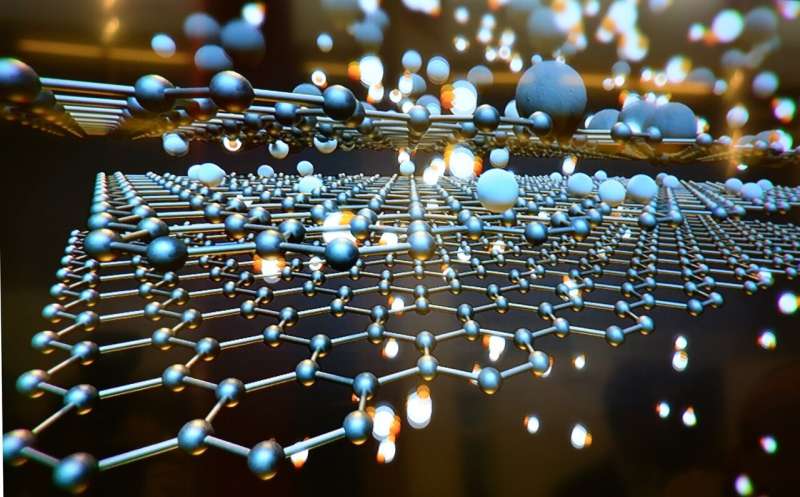University of Science and Technology researchers have a chemical formula for high-performance zinc-ion batteries.

Vanadium oxides are widely used cathode materials in safe and non-toxic zinc-ion batteries (ZIBs) due to their flexible crystal structure and multivalence of vanadium. Pre-intercalation of ions or molecules can enhance battery performance by addressing limited lattice space and poor electronic conductivity in cathode materials. However, current research on intercalation cathode materials mainly aims to expand interlayer space for increased capacity.
A team led by Prof. Song Li from the University of Science and Technology of China (USTC) of the Chinese Academy of Sciences (CAS) have proposed intercalant-induced V t2g orbital occupation and developed NH4+-intercalated vanadium oxide (NH4+-V2O5) for high-performance ZIBs. Advanced in-situ characterization techniques are crucial for studying intrinsic structural variations of intercalant-induced atomic orbitals in electrode materials. This will be crucial for designing high-performance cathode materials in the future.
The researchers employed in-situ and ex-situ synchrotron radiation spectroscopy techniques to unveil the reversible evolution law during the charge and discharge process and the V 3dt2g orbital occupation change in V2O5 after NH4+ intercalation. NH4+ intercalation resulted in a significant structural distortion of the V-O bond, leading to electronic structure rearrangement and enabling the 3dxy vacancy state occupation in the Vt2g orbital. This occupation improved the electrical conductivity of the material.
Moreover, NH4+ intercalation widened the layer spacing, enhancing electron transfer and Zn-ion migration, resulting in the zinc-ion battery’s outstanding multiplicative capability, as the researchers discovered. The experiment demonstrated that at a current density of 200 C and a charging time of 18 s, the ammonium intercalated vanadium pentoxide (NH4+-V2O5) cathode material maintained a specific capacity of 101.0 mA h g-1 with excellent rate capability.
The research offers insights into the Zn2+ storage mechanism in V2O5 materials intercalated with NH4+ and sets a basis for the development of high-performance intercalated cathode materials for ZIBs.
Reference : Yixiu Wang et al, Intercalant-induced V t 2 g orbital occupation in vanadium oxide cathode toward fast-charging aqueous zinc-ion batteries, Proceedings of the National Academy of Sciences (2023). DOI: 10.1073/pnas.2217208120






